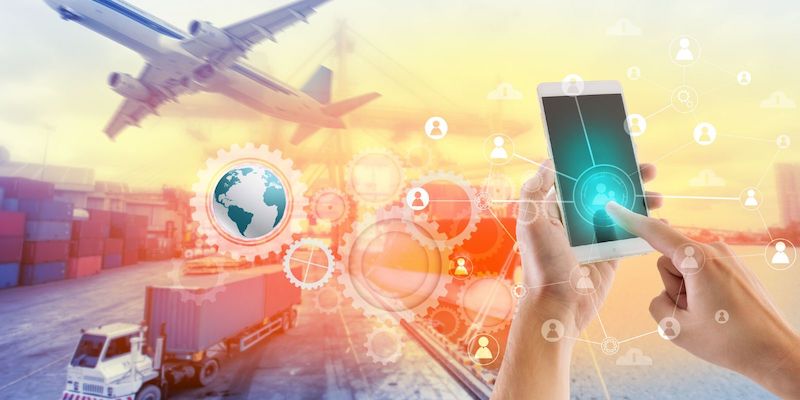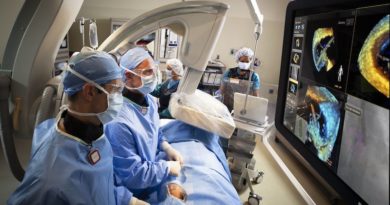
Data: the fuel that feeds digitalisation
The potential benefits of digitalisation for the transport sector are immense: for safety, efficiency and sustainability. This is particularly important at a time when we are looking for ways to cut transport emissions by 90% by 2050, as pledged in our Sustainable and Smart Mobility Strategy, which followed the publication of the European Green Deal.
The way we produce, share and use data plays an integral role in this transformation.
To give a few examples:
· Better and more complete information, combined with greater automation, can make mobility safer and more secure. As a reminder, one of our strategic targets is to achieve ‘Vision Zero’ – zero fatalities across the different transport modes by 2050.
· Data also contributes to sustainable mobility, for instance by optimising traffic through better information and planning, and by informing users of their carbon footprint.
· Data is also crucial to leaving no-one behind as we make the transition – such as passengers with reduced mobility or disabilities.
However, as the term suggests, ‘data-sharing’ requires cooperation. And seamless, cross-border multimodality will only be possible if we succeed in connecting users, operators, infrastructure managers and service providers. The same is true for automation, while data also fuels artificial intelligence.
Both our Data Strategy, and our Sustainable and Smart Mobility Strategy of December 2020, make a case for greater cooperation.
Data Strategy
Published in February 2020, the European Data Strategy sets out the Commission’s vision, which includes a single market for data to ensure Europe’s global competitiveness and data sovereignty. A Data Governance Act followed, while a Data Act and new rules on high-value datasets are in the pipeline.
We are also developing common European data spaces in strategic sectors such as health, energy and mobility. These will ensure that more data are available for use in the economy and society, but keep the companies and individuals who generate the data in control.
Mobility initiatives
For mobility and transport, the Sustainable and Smart Mobility Strategy lays the ground for a green and digital transformation and greater resilience to future crises. It lists over 80 measures for adoption in the coming years that will help us achieve these goals.
For digitalisation, one of the three main pillars of the Strategy, the focus is on ;
I) making connected and automated multimodal mobility a reality;
II) innovation, data and artificial intelligence for smarter mobility. On data-sharing, it announces:
· The revision of the ITS Directive, which we present in December, to accelerate the coordinated deployment and use of intelligent transport systems in road transport and for passenger multimodality. We want to increase the interoperability and cross-border continuity of ITS services, establish effective coordination and monitoring mechanisms between ITS stakeholders, and solve issues related to data availability and data sharing.
· An update to the current specifications for EU-wide real-time traffic information (RTTI) services. The goal is to expand their geographical coverage, support new data types (such as recharging/refuelling points and low-emission zones) and enable data for business-to-government use-cases (e.g. for traffic and asset management).
· Two initiatives to support multimodal services for passenger mobility, which we will present next year. These include a revision of the multimodal travel information services regulation to support new data types and advance on standardisation, and a new initiative addressing market imbalances when it comes to developing digital services for multimodal mobility. The ultimate goal is to make it much easier than it is today for passengers to buy a single ticket that covers more than one transport mode.
These initiatives tackle specific data-sharing issues, but we also need to see more interoperability and consistency on data access and sharing overall to reap the full benefits and ultimately establish the ‘bigger picture’.
We are in the process for instance of launching NAPCORE, a Member State-driven Coordination Mechanism for the ITS National Access Points. The platform will enable Member States to work together on common issues and coordinate their data-related ITS initiatives linked to the National Access Points.
For freight and logistics, the Digital Transport and Logistics Forum (DTLF) is working on a common digital environment (freight corridor information systems) to foster interoperability and transparency in data-sharing between all types of supply chain stakeholders. Optimising logistics operations is expected to reduce congestion and empty runs on our roads, and facilitate multimodal alternatives to road-only transport.
Next year the work will continue, first with the launch of a number of projects to build a common European mobility data space. The space will facilitate access, pooling and the sharing of data from existing and future transport and mobility databases. It will build on existing initiatives and recommend supporting measures to bring those initiatives closer together. It will also make use of the many (infrastructure) building blocks that the Commission will fund in the coming years through the Digital Europe Programme.
For the past two decades, we have worked on the different pieces used by the different transport modes. Now is the time complete those pieces, and start putting the puzzle together to create a future-proof mobility and transport system.




